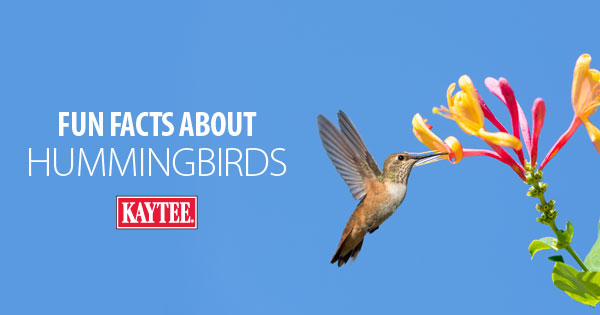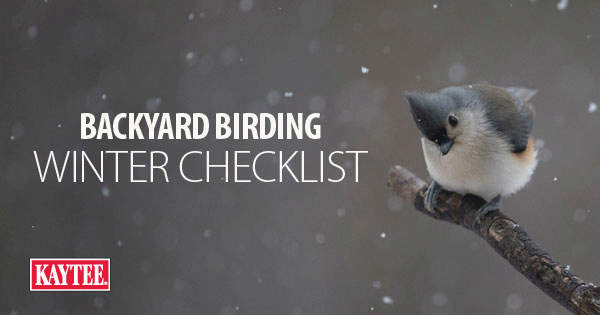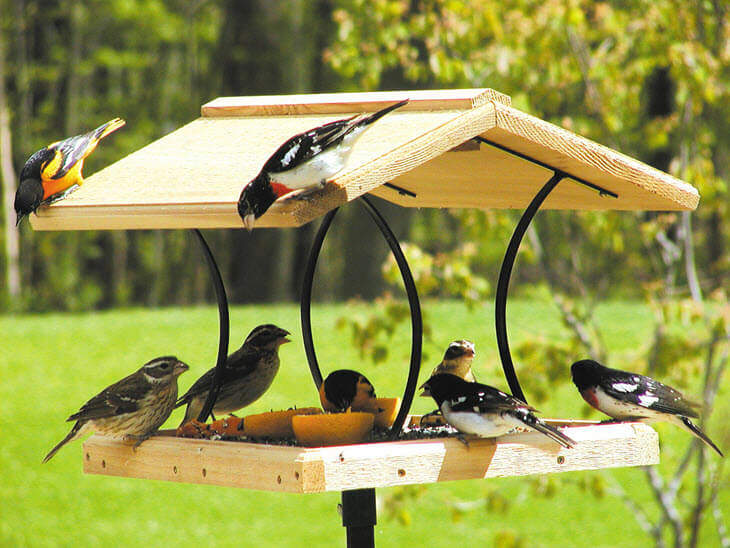Fun Facts About Hummingbirds
Hummingbirds are fascinating little birds with their long beaks and fast-moving wings. They can be seen darting around nectar feeders and flowers across the U.S. How much do you know about these tiny feathered friends? These facts might surprise you and you might even learn a thing or two about your backyard visitors.
10 Facts About Hummingbirds
1. They are the smallest migrating bird. They don’t migrate in flocks like other species, and they typically travel alone for up to 500 miles at a time.
2. The name, hummingbird, comes from the humming noise their wings make as they beat so fast.
3. Hummingbirds are the only birds that can fly backwards.
4. Hummingbirds have no sense of smell. While they can’t sniff out feeders, they do have good color vision. Some birds like the Ruby-throated Hummingbird prefer orange or red flowers. Despite this, red dye should not be used in nectar as it could harm the birds. Instead, plant naturally red or orange flowers or use feeders that have red coloring in their structure.
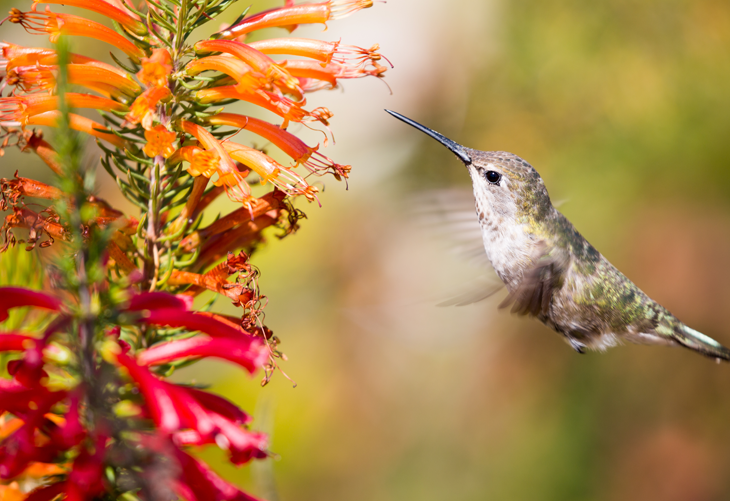
5. The average weight of a hummingbird is less than a nickel.
6. Their tiny legs are only used for perching and moving sideways while perched. They can’t walk or hop.
7. Hummingbirds drink the nectar found in feeders by moving their tongue in and out about 13 times per second. They can consume up to double their body weight in a day.
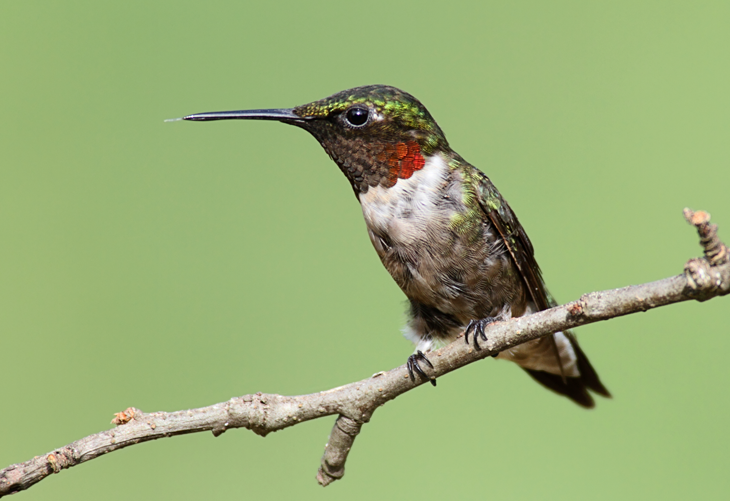
8. The average number of eggs laid by female hummingbirds is only two. These eggs have been found in nests smaller than a half dollar and compare in size to a jellybean or a coffee bean. Some species, like the Black-chinned Hummingbird make their nests with plant down, spider silk, and other natural resources that can expand as their babies grow after hatching.
9. A flock of hummingbirds can be referred to as a bouquet, a glittering, a hover, a shimmer, or a tune.
10. There are over 330 species of hummingbirds in North and South America. Common species in the U.S. include:
- Rufous Hummingbird – these birds are found along the western half of the U.S. ranging from Alaska all the way south to Mexico depending on the season and their migration. Their orange color can be spotted in flowers and at backyard feeders, but only for a short time as this bird is usually on the move.
- Anna’s Hummingbird – typically found along the western coast of the U.S. These birds are easy to attract to backyards with nectar or by looking in spring blossoming trees and flowers.
- Calliope Hummingbird – there are bright magenta feathers on this little bird. They can be found across the western half of the U.S. into both Canada and Mexico. This is the smallest known bird in the U.S. with a weight similar to a ping pong ball.
- Broad-tailed Hummingbird – found in the high mountain meadow areas, they are known for rose-magenta throats on the males.
- Ruby-throated Hummingbird – these green and red birds are found across the eastern half of the U.S. and ranging from Canada to Mexico during migration. This species is attracted to hummingbird feeders or tubular flowers.
- Black-chinned Hummingbird – these small birds are known for their green, purple, and black colors. They often perch on bare branches as they travel along the western coast in the U.S. down to Mexico.
How to Safely Attract Hummingbirds
1. Clean your hummingbird feeders regularly: remove and clean your feeder with 9 parts warm water to 1 part bleach outdoors once a week to ensure no mold or salmonella grow in the feeder. Hummingbirds are more likely to feed off fresh sugar water and a consistently clean feeder will ensure regular feedings!
2. Add native plants near your hummingbird feeder: plants like honeysuckle or other bright tubular species will hold more nectar and naturally attract hummingbirds to your yard.
3. Provide hummingbirds the best nutrition: hummingbirds love sweet formulas and will eat nectar and sugar water all season long. Add in additional hydration and the ease of an all-in-one product with Kaytee Hummingbird ElectroNectar.
What hummingbirds have you spotted in your local area? They can be hard to spot as they fly quickly through flowering gardens, but they can be easy to attract with hummingbird feeders and nectar. Spring and summer are the perfect time to start feeding these tiny birds!
Sources:
The Spruce- Fun Facts About Hummingbirds
UC Davis- Hummingbird Information
All About Birds- Guide
